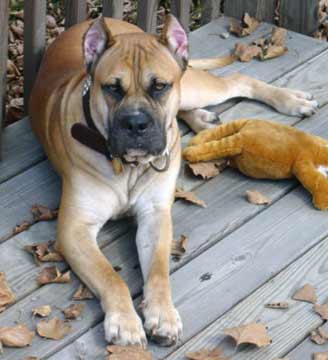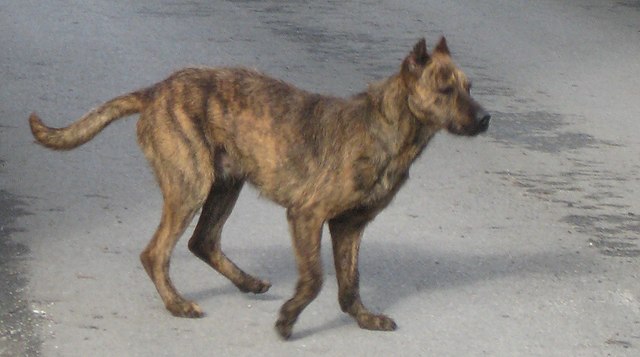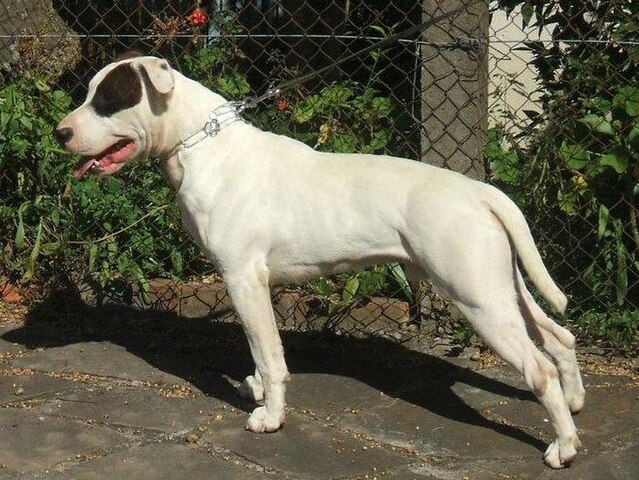The Continental Bulldog is a new breed created in 2004 Switzerland by crossing the (English) Bulldog with the Olde English Bulldogge. The creation came about because of The European Convention on the Breeding and Keeping of Pets, as well as the Swiss Animal Welfare Act, as it was determined that the (English) Bulldog was not healthy enough to be ethically bred. This is a very controversial topic, and one that is debated heavily as many Bulldog fanciers purport that their breed can be very healthy when well-bred! Wherever one stands on the issue, this new breed is unique to itself while still retaining many of the characteristics of the aforementioned breed. Recognized in a few countries including Germany (and of course Switzerland), the breed is provisionally recognized by the FCI as well. In this process, the breed will sit at provisional status for 10 years while the the population of dogs is monitored and developed.
The Continental is praised for being calm in the home and not overly demanding of physical exercise, while still being athletic enough to participate in dog sports. This molosser breed has a similar temperament to other bulldog types, being easy to live with. He is friendly to both family and strangers but does so with a laid-back attitude. His grumpy-looking face may make him seem fierce, but he is actually comical and loving. The Continental Bulldog needs to spend lots of time with his human family in order to thrive. In fact, the sole purpose of the breed was to create a companion animal.
Continental Bulldogs are basically couch potatoes that are willing and able to participate in activities with their owners when desired. This means they can work equally well for active owners as well as the less active, or even apartment-dwellers as long as they are given at least a moderate amount of exercise. They are confident enough to take in new situations with ease (when socialized) and interested in new surroundings. They should be neither aggressive nor shy towards people or other dogs, so they are easy to bring into public. A medium sized dog, they are small enough to fit in most cars while being large enough to keep up with their owners when leashed. They have the same massive frame as most other molosser breeds which often garners attention from strangers who admire this type of dog. 
Continentals can come in any color, save for brown or blue. White with patches of color is discouraged, however, and their nose should always be black. The smooth, flat coat sheds a moderate amount and so needs to be brushed at least once a week. Grooming needs will also include cleaning the wrinkles and folds of the dog’s face regularly and keeping it dry. Doing so will help to prevent trapped moisture from causing infections. The ears, which can appear either as rose ears or folded ears, should be inspected and cleaned on a somewhat regular basis. Overall this is a low-maintenance breed in terms of grooming.
Contis (as they are affectionately known) can be stubborn and, as such, need owners with a bit of patience! They are ranked medium in difficulty to train and require someone that can be firm in laying down the rules while always practicing consistency. For best results, start training while the dog is young and before they develop into their full strength! Contis generally live between 11-13 years, so starting off right with obedience training will likely make for an easier and more enjoyable experience for the lives of both dog and human. Overall, for those who are prepared to deal with a bit of stubbornness, this can be a good dog for a novice dog owner.
Contis can make wonderful watchdogs as they will bark to alert when someone comes to the door but are otherwise usually quiet. They also fulfill the role of family dog just as well, as they tend to get along with children. It is highly recommended to supervise interactions with young kids, however, as should be the case with all dogs! They love to play and can be somewhat exuberant, hence the supervision. One also must always make sure kids are treating the dog fairly. Along with a good attitude toward children, Contis also get along with other household pets including other dogs! Some people have problems keeping two males together, however, so opposite sex pairs are usually best. Overall this new breed shows a lot of promise as a companion animal, and fanciers hope that in time they will develop further and spread across the globe so that others can experience their wonderful temperaments!



